I'm going to be installing tabs soon on my 1801. What would you guys use to seal the screw holes where the tabs mount to the transom ... 5200 or Epoxy? Bennett says "dip the screws in Epoxy", and then I heard some people use 5200 because it seals better. I want it to seal good and last a long time. What should I use?
You are using an out of date browser. It may not display this or other websites correctly.
You should upgrade or use an alternative browser.
You should upgrade or use an alternative browser.
5200 or Epoxy?
- Thread starter Croixboy
- Start date

Help Support Classic Parker Boat Forum:
This site may earn a commission from merchant affiliate
links, including eBay, Amazon, and others.
Wicho
Well-known member
I used 5200 on a recent project for the new screws.
And used marine tex for filling of the old holes.
And used marine tex for filling of the old holes.
Many folks here have used both.
Once the holes are marked, they are first overbored so that the core can be exposed and soaked with thinned epoxy to give it protection from any water intrusion. Once the thinned epoxy sets up, the holes are then filled with thickened epoxy and allowed to harden.
Once the epoxy has cured, the holes are then drilled the proper size for the mounting screws. This insures that the screws are biting into epoxy and not unprotected wood or fiberglass.
Last... during final assembly the screw holes are given a dab of 5200 which both seals, and provides a mechanical bond. 5200 contains a powerful adhesive which acts as a 'lockwasher' as well as a sealant.
Make sense?
Once the holes are marked, they are first overbored so that the core can be exposed and soaked with thinned epoxy to give it protection from any water intrusion. Once the thinned epoxy sets up, the holes are then filled with thickened epoxy and allowed to harden.
Once the epoxy has cured, the holes are then drilled the proper size for the mounting screws. This insures that the screws are biting into epoxy and not unprotected wood or fiberglass.
Last... during final assembly the screw holes are given a dab of 5200 which both seals, and provides a mechanical bond. 5200 contains a powerful adhesive which acts as a 'lockwasher' as well as a sealant.
Make sense?
gw204
Well-known member
Megabyte":2glqnwn5 said:Many folks here have used both.
Once the holes are marked, they are first overbored so that the core can be exposed and soaked with thinned epoxy to give it protection from any water intrusion. Once the thinned epoxy sets up, the holes are then filled with thickened epoxy and allowed to harden.
Once the epoxy has cured, the holes are then drilled the proper size for the mounting screws. This insures that the screws are biting into epoxy and not unprotected wood or fiberglass.
Last... during final assembly the screw holes are given a dab of 5200 which both seals, and provides a mechanical bond. 5200 contains a powerful adhesive which acts as a 'lockwasher' as well as a sealant.
Make sense?
That's excellent advice, but it does require one correction.
You want to fill the holes with the thickened epoxy before the unthickened epoxy sets up. That allow the two to both mechanically and chemically bond thus resulting in a stronger union.
Or you could allow the thinned to cure, but you would have to somehow rough up the surface of the cured epoxy to remove the amine blush and give the thickened stuff a toothy surface to bond to. With this, you would have only a mechanical bond.
I also like to put a slight countersink in any hole I put a screw in. This helps to prevent chipping of the glass and/or gelocat and also forms a pocket that gets filled with sealant when the fasteners are tightened down. I put a slightly larger countersink on the holes I fill with epoxy. This increases the surface area of the bond and makes it even stronger.
jeffnick
Well-known member
The Bennett instructions DO say to use epoxy, but I felt more comfortable with 5200. You can overdrill and fill with epoxy, then set the fasteners in the epoxy instead of directly into the transom, but if you think about it, outboard motor bolts go directly thru the transom and are only sealed with 5200.
I've got a lot of faith in 5200; it has more ability to flex than epoxy...it's all I use.
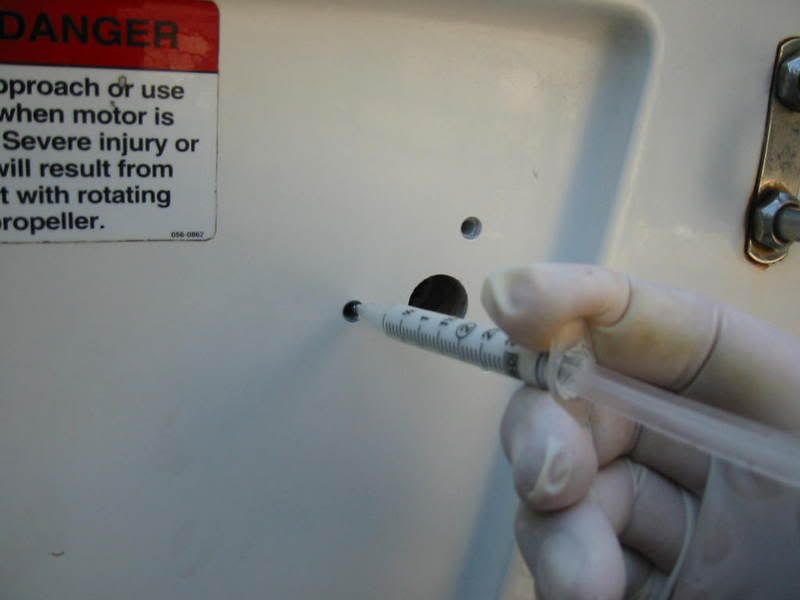
I love the syringe for 5200 application.
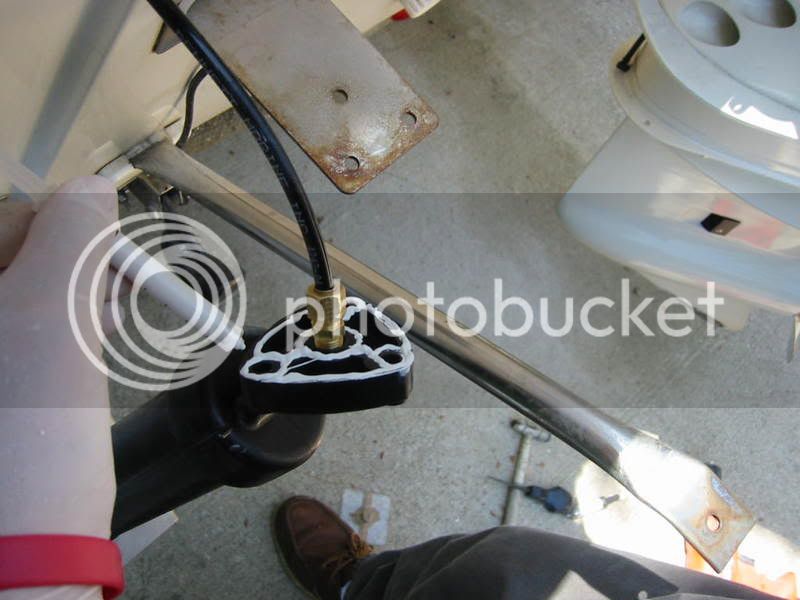
And while we're at it, because I'm perpendicularly challenged, I use a jig to drill the holes in the transom not only to get them perpendicular, but also to make sure they're the proper depth.
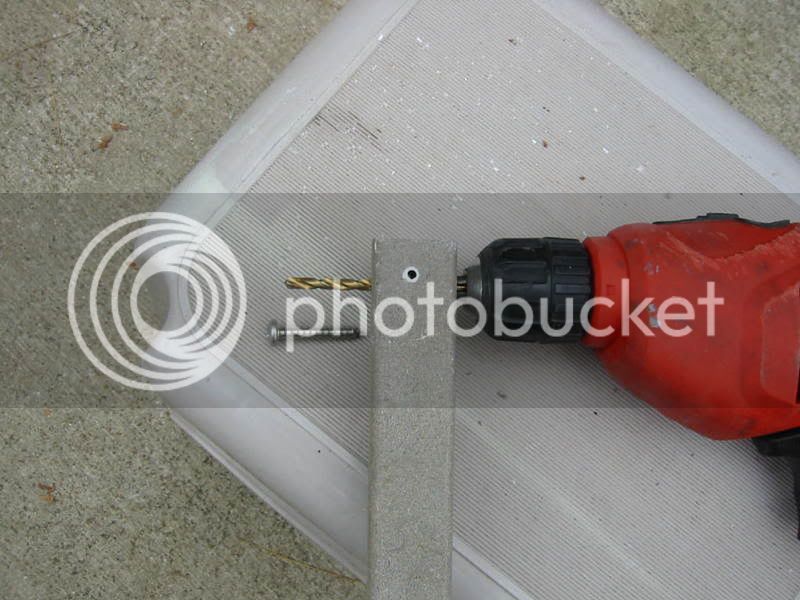
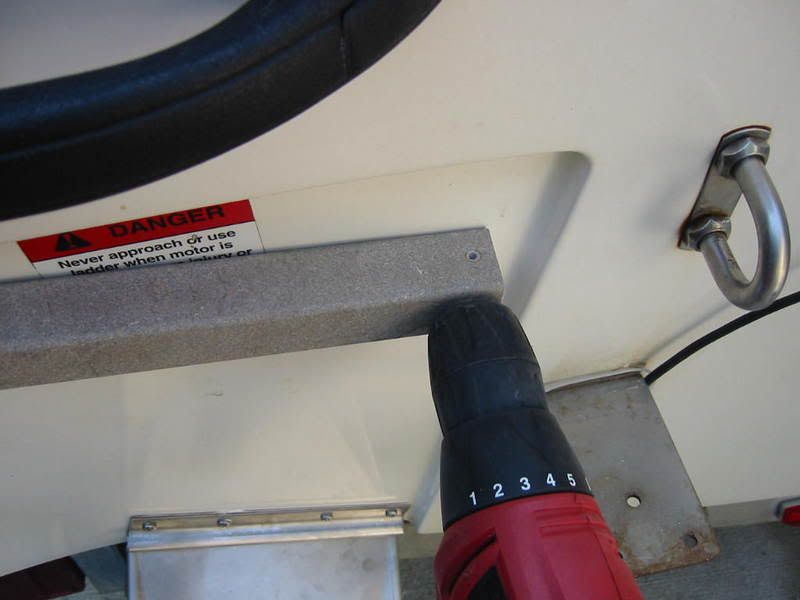
Gotta love those Bennets!
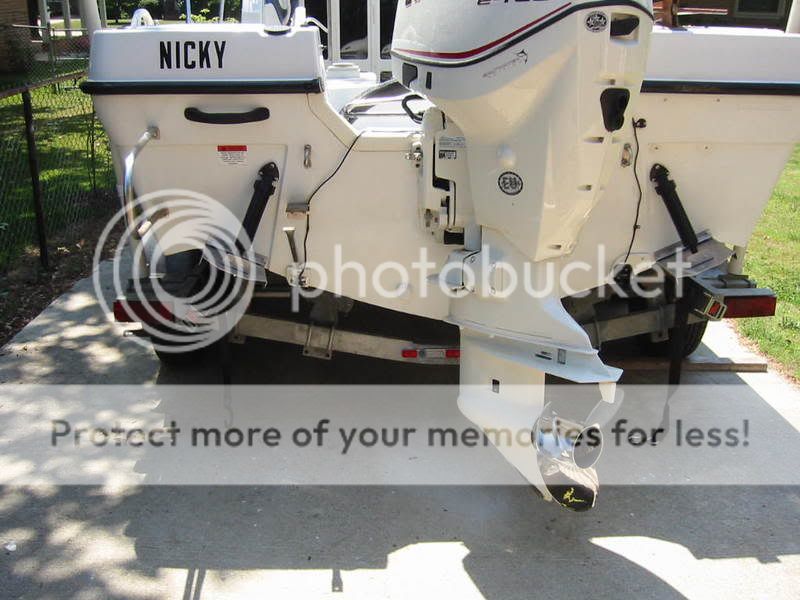
If you've got the basic kit and plan to later install position indicators, be advised that they use a different top hinge and you'll have to pull the actuator off to make the swap (and run additional wires).
I've got a lot of faith in 5200; it has more ability to flex than epoxy...it's all I use.

I love the syringe for 5200 application.

And while we're at it, because I'm perpendicularly challenged, I use a jig to drill the holes in the transom not only to get them perpendicular, but also to make sure they're the proper depth.


Gotta love those Bennets!

If you've got the basic kit and plan to later install position indicators, be advised that they use a different top hinge and you'll have to pull the actuator off to make the swap (and run additional wires).
jeffnick
Well-known member
I thought a few more details might be in order.
The syringe can be purchased at WalMart, or Tractor Supply or ask your vet. Here's how I fill them w/ 5200.
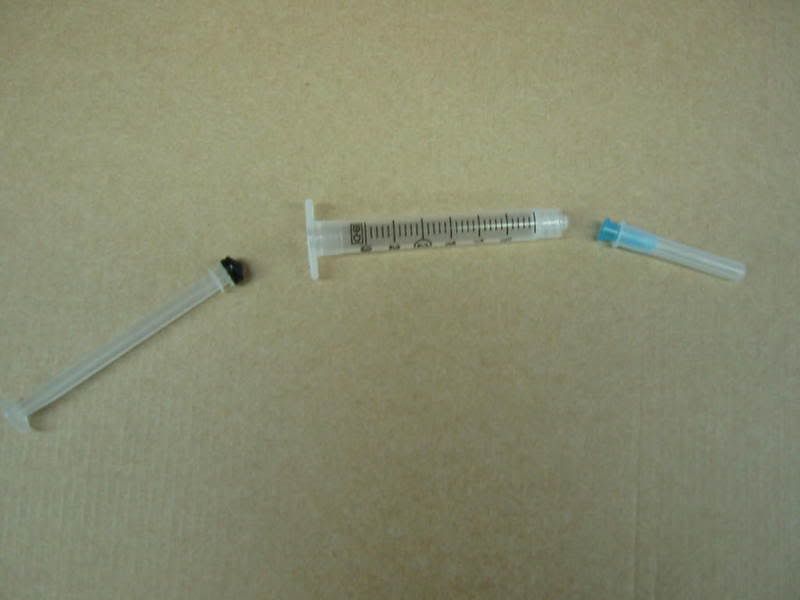
Dispose of the needle part, you'll never get 5200 thru it anyway.
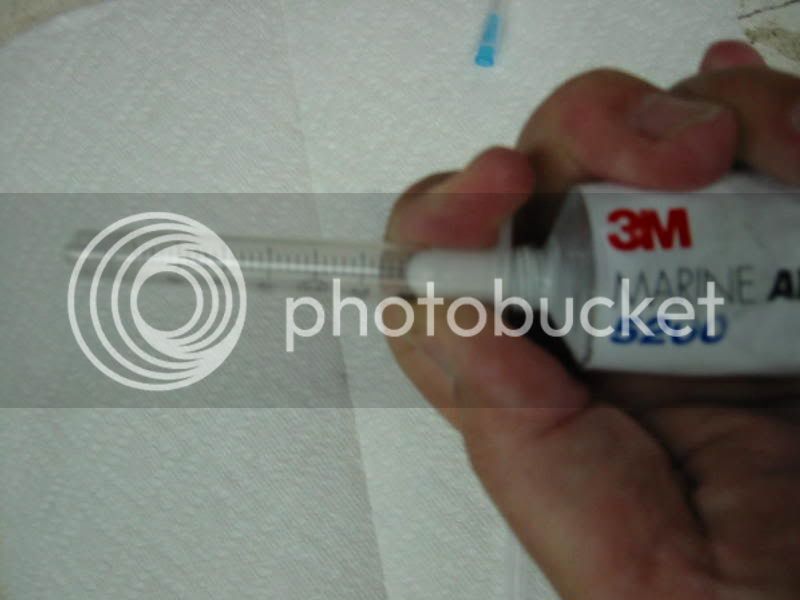
Don't fill the cavity all the way up or you'll just end up pushing 5200 out as you insert the plunger.
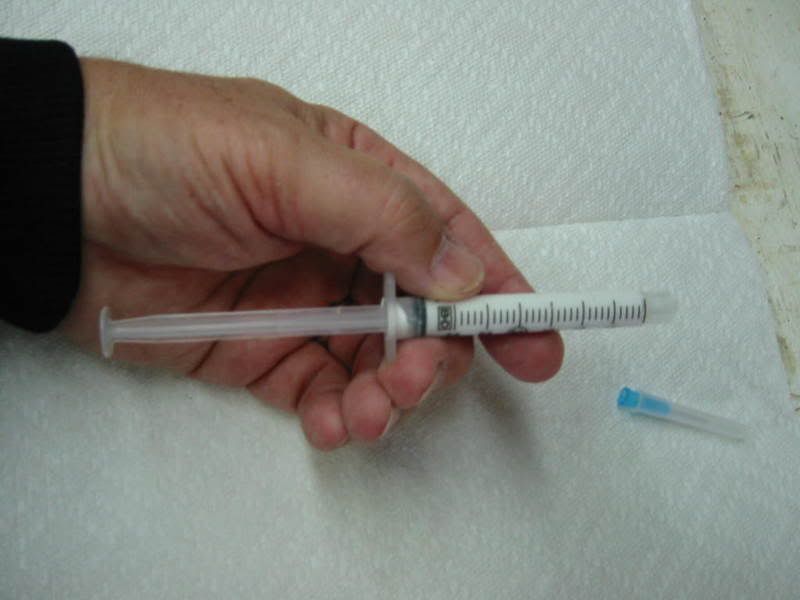
When I apply the 5200 into the hole, I fill it from the blind end by using either a horse needle (from Tractor Tupply) or tubing.
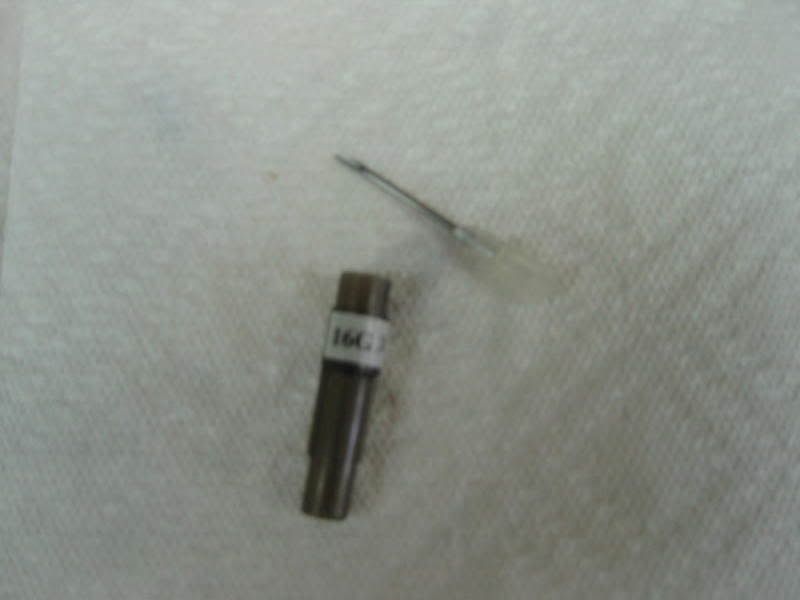
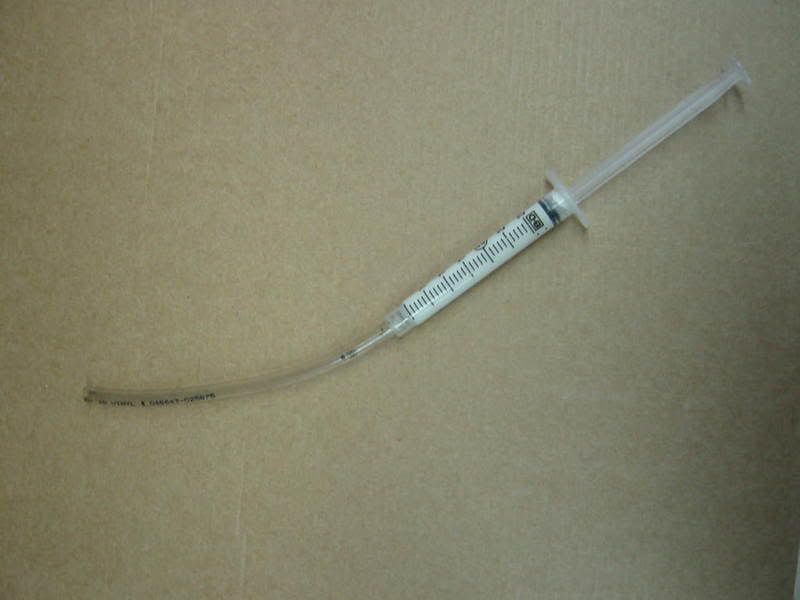
Push the needle or tubing all the way in. Feed in the 5200 until it comes out the hole, then continue feeding 5200 as the assemply is removed from the hole.
I swabbed the inside of the large hole liberally with 5200, rubbing it in with my finger. Then not wanting to wait until it cured, I made a temporary sleeve to run the tubing thru so it didn't get all messy.
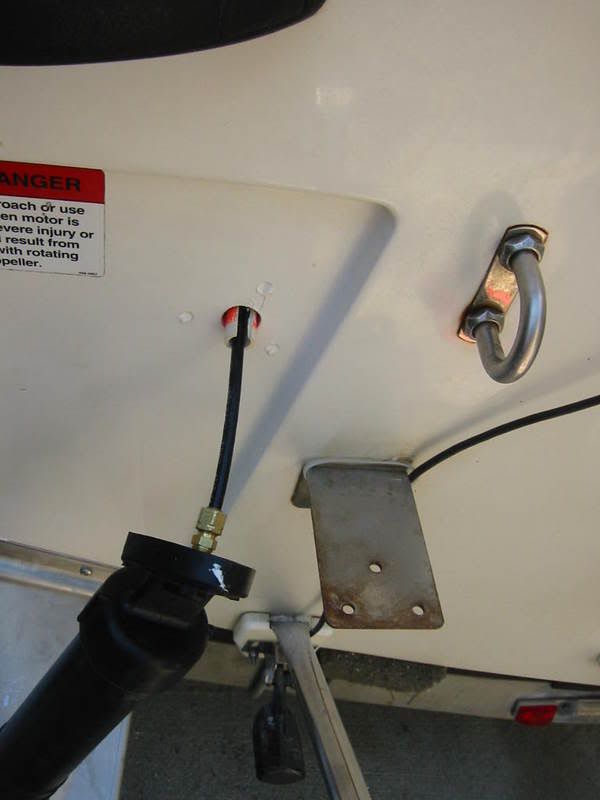
And don't forget to chamfer the hole before running in the fastener; you all know this prevents the gel coat from cracking around the hole. Be generous with the champfer (make it big). This can be done with a large drill bit, but I prefer the proper tool.
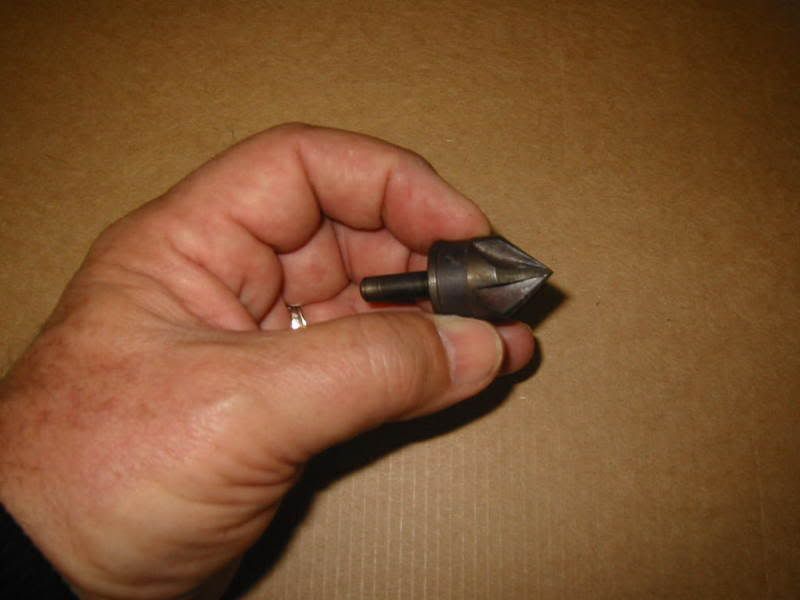
If you have one, you'll be surprised how often you'll use it.
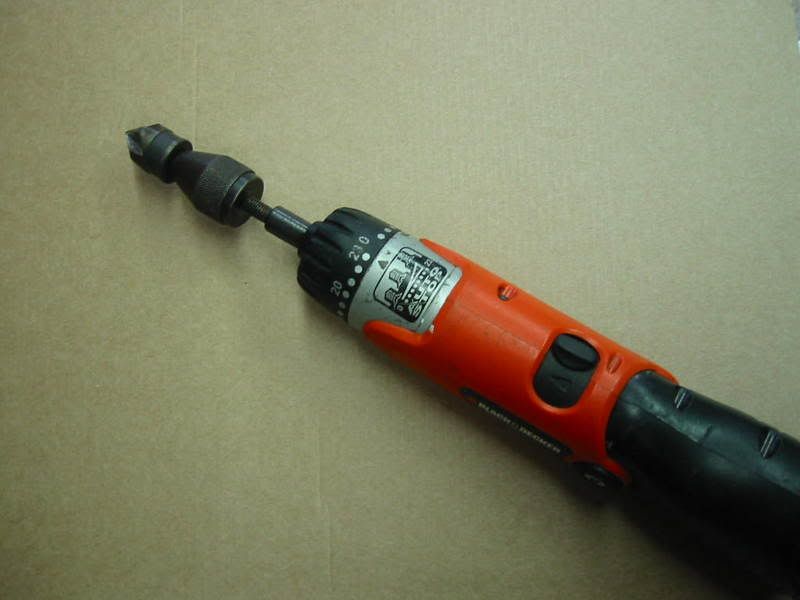
And I found that I needed the larger pilot bit as recommended by Bennett.
The syringe can be purchased at WalMart, or Tractor Supply or ask your vet. Here's how I fill them w/ 5200.

Dispose of the needle part, you'll never get 5200 thru it anyway.

Don't fill the cavity all the way up or you'll just end up pushing 5200 out as you insert the plunger.

When I apply the 5200 into the hole, I fill it from the blind end by using either a horse needle (from Tractor Tupply) or tubing.


Push the needle or tubing all the way in. Feed in the 5200 until it comes out the hole, then continue feeding 5200 as the assemply is removed from the hole.
I swabbed the inside of the large hole liberally with 5200, rubbing it in with my finger. Then not wanting to wait until it cured, I made a temporary sleeve to run the tubing thru so it didn't get all messy.

And don't forget to chamfer the hole before running in the fastener; you all know this prevents the gel coat from cracking around the hole. Be generous with the champfer (make it big). This can be done with a large drill bit, but I prefer the proper tool.

If you have one, you'll be surprised how often you'll use it.

And I found that I needed the larger pilot bit as recommended by Bennett.
flydoc
Well-known member
Are you going wioth Bennetts or Lenco's?
Please take ohotos of the steps b/c I may try to do the same to my 1800.
Thanks and good luck!
Please take ohotos of the steps b/c I may try to do the same to my 1800.
Thanks and good luck!
Magabyte & gw204 ... Thanks for the reply. That certainly makes sense drilling a larger hole, filling with epoxy, and re-drilling the epoxy. Much stronger set for screws. Question ... how much larger should the intial holes be? Bennett recommends drilling up to a 5/32 hole to set the screws directly into the transom. Would the initial (larger hole) be 1/4" to set the epoxy into?
Jeffnick ... Wow! Thanks for the step by step pictures, and tips working with 5200. That stuff can be messy. Do you have any "tips" for the pump installation?
Flydoc ... The more i think about this project, the more I'm leaning towards Bennetts. I had Bennetts on my 226 Grady and they worked great. Only problem I had was a switch that went bad, and they replaced it right away without question. I've also heard the quality of their tab is much better. In addition it looks like the Lenco requires 8 screw holes to install one tab, The Bennett has 4 screw holes. I sweat whenever I put a drill to my transom so the Bennett gets the nod in that regard as well.
Jeffnick ... Wow! Thanks for the step by step pictures, and tips working with 5200. That stuff can be messy. Do you have any "tips" for the pump installation?
Flydoc ... The more i think about this project, the more I'm leaning towards Bennetts. I had Bennetts on my 226 Grady and they worked great. Only problem I had was a switch that went bad, and they replaced it right away without question. I've also heard the quality of their tab is much better. In addition it looks like the Lenco requires 8 screw holes to install one tab, The Bennett has 4 screw holes. I sweat whenever I put a drill to my transom so the Bennett gets the nod in that regard as well.
jeffnick
Well-known member
So I guess it is felt that a compound seal of epoxy to the transom core, then 5200 to the epoxy is better than 5200 alone? Or do we just run the fasteners directly into the epoxy eliminating the 5200 altogether, or do we seal the fasteners in the epoxy with more epoxy?
Would it be recommended that I go back and re-do my 5200 direct into transom? And what about those motor bolts -- should they be bedded into an epoxy 'sleeve' as well...and would 5200 be in order there, or just the epoxy?
I'm not trying to make trouble here, just wanting to be able to rationalize this epoxy concept and the extra time/trouble it entails. Don't we use 5200 below the waterline instead of epoxy, to keep water out of planked hulls and seal thru hulls?
Would it be recommended that I go back and re-do my 5200 direct into transom? And what about those motor bolts -- should they be bedded into an epoxy 'sleeve' as well...and would 5200 be in order there, or just the epoxy?
I'm not trying to make trouble here, just wanting to be able to rationalize this epoxy concept and the extra time/trouble it entails. Don't we use 5200 below the waterline instead of epoxy, to keep water out of planked hulls and seal thru hulls?
Nick... I wouldn't go back and re-doo anything unless it doesn't set well with your mind.
Whether you use epoxy and 5200 or 5200 alone isn't the issue. The issue is... do you feel that the core is protected?
If the answer is yes... Go forward and enjoy your boat.
If the answer is no, do what you have to to make it so you feel that it is protected.
Don't stress about it. :wink:
Whether you use epoxy and 5200 or 5200 alone isn't the issue. The issue is... do you feel that the core is protected?
If the answer is yes... Go forward and enjoy your boat.
If the answer is no, do what you have to to make it so you feel that it is protected.
Don't stress about it. :wink:
jeffnick
Well-known member
Thanks Megabyte.
I heard about the epoxy 'sleeve' method quite some time ago and tried it (with apparent success) although it is challenging on vertical surfaces.
When I was re powering, I asked myself if it would be a good time to incorporate the epoxy sleeve in the motor mount holes. Because it is sooo much extra work, I decided I'd let the conditions of the motor mount transom holes dictate the decision. After I pulled the motor and cleaned the 5200 out the holes all I found was firm dry wood. It got me to thinking about the advantages of the epoxy vs just plain 5200. My current thinking is that epoxy sleeves are not necessary, and maybe the procedure is a good candidate for Mythbusters; it's something that someone heard and passed on. The purpose of my post was to try to stir the passion for the procedure by those who endorse it -- maybe coming up with chemical or physical reasons why they believe in it; why it's good and/or necessary...
As mentioned in my post above, I've got a lot of faith in 5200, and while I too, hate the thought of holes in my transom, I have absolutely no qualms about keeping them dry with only 5200. Also, for any unused holes, a blind fill of 5200 (as shown in above pic) makes me much more comfortable than sealing same with epoxy.
How about it guys...how many of you actually use the epoxy 'sleeve' method and is it because you've had problems without it?
I heard about the epoxy 'sleeve' method quite some time ago and tried it (with apparent success) although it is challenging on vertical surfaces.
When I was re powering, I asked myself if it would be a good time to incorporate the epoxy sleeve in the motor mount holes. Because it is sooo much extra work, I decided I'd let the conditions of the motor mount transom holes dictate the decision. After I pulled the motor and cleaned the 5200 out the holes all I found was firm dry wood. It got me to thinking about the advantages of the epoxy vs just plain 5200. My current thinking is that epoxy sleeves are not necessary, and maybe the procedure is a good candidate for Mythbusters; it's something that someone heard and passed on. The purpose of my post was to try to stir the passion for the procedure by those who endorse it -- maybe coming up with chemical or physical reasons why they believe in it; why it's good and/or necessary...
As mentioned in my post above, I've got a lot of faith in 5200, and while I too, hate the thought of holes in my transom, I have absolutely no qualms about keeping them dry with only 5200. Also, for any unused holes, a blind fill of 5200 (as shown in above pic) makes me much more comfortable than sealing same with epoxy.
How about it guys...how many of you actually use the epoxy 'sleeve' method and is it because you've had problems without it?
evinrudejim
Well-known member
5200 is MORE THAN ADEQUATE. You should consider 5200 a PERMANENT adhesive. It's common to pull off gel coat when removing items applied with 5200. If I think I may at some point have to remove a fitting, I would go with 4200, which is supposed to be more UV resistant than 5200.
You can use dental floss to cut thru cured 5200 when removing thru-hulls and transducers. Works pretty good.
You can use dental floss to cut thru cured 5200 when removing thru-hulls and transducers. Works pretty good.
jeffnick
Well-known member
Here's a place that recommends the epoxy sleeve method. Scroll down to page 5.
http://www.sideshift.com/products/SS Series Installation 2007.pdf
Another 5200 procedure that I admit to perpetuating, but not following is:
For the best seal when mounting deck hardware, apply 5200 and run the fasteners snug, but don't tigthten fully until AFTER the 5200 has set up.
http://www.sideshift.com/products/SS Series Installation 2007.pdf
Another 5200 procedure that I admit to perpetuating, but not following is:
For the best seal when mounting deck hardware, apply 5200 and run the fasteners snug, but don't tigthten fully until AFTER the 5200 has set up.
jeffnick":325t0n9e said:Another 5200 procedure that I admit to perpetuating, but not following is:
For the best seal when mounting deck hardware, apply 5200 and run the fasteners snug, but don't tigthten fully until AFTER the 5200 has set up.
This is the proper procedure for setting the fixture into a bed of sealant. Over tightening before the sealant is dry will starve the joint of material.
gw204
Well-known member
JC":3ulodvq7 said:This is the proper procedure for setting the fixture into a bed of sealant. Over tightening before the sealant is dry will starve the joint of material.
That only works if your thru-bolting. Try that with screws and as soon as you tighten down the screw you break the seal.
I tighten my fasteners all the way from the start, but I also use a countersink to create a pocket on the top of the hole. This way, when I tighten things down all the sealant doesn't squish out. More than enough is left in the pocket to keep the fastener sealed.



